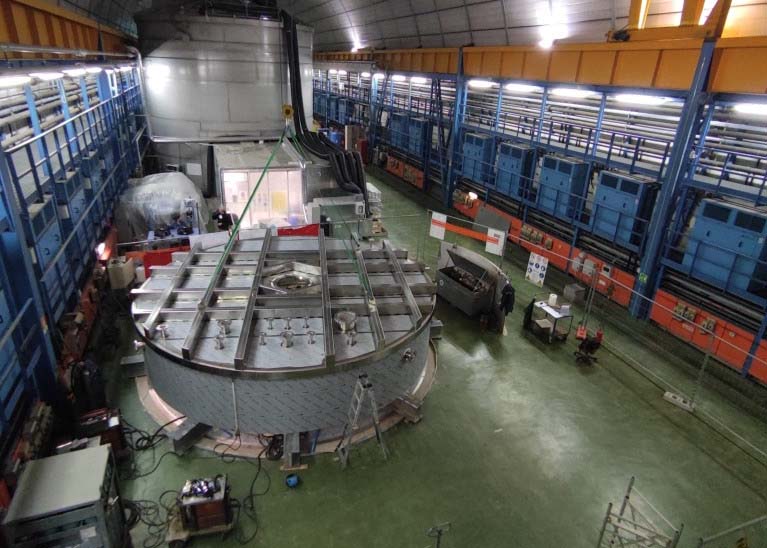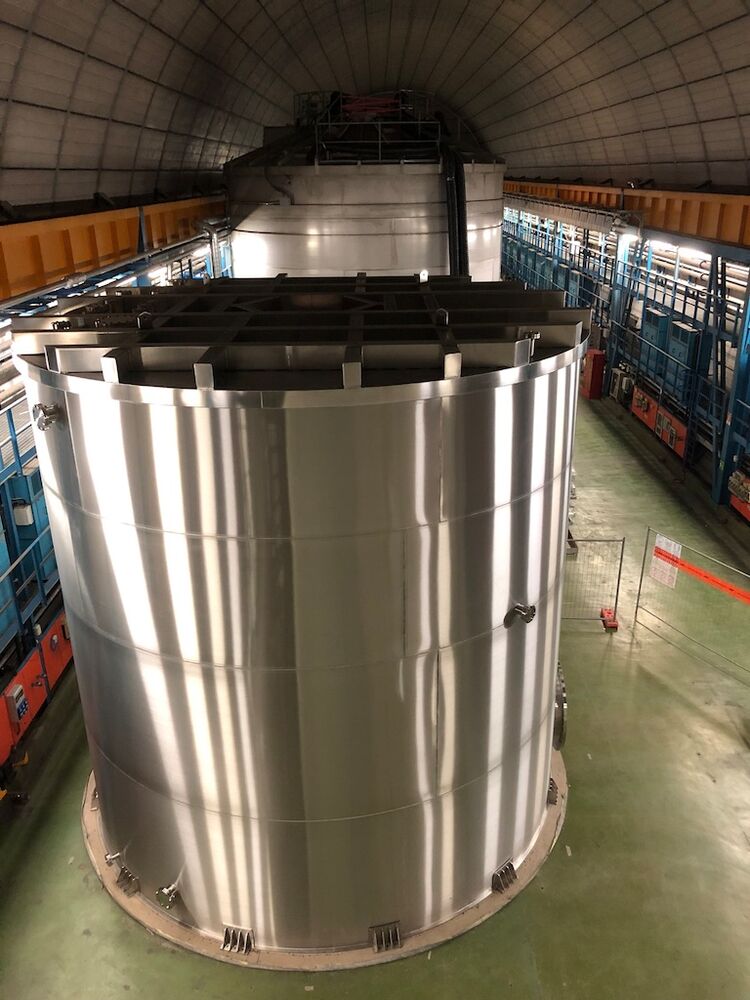Work in the hall B began in November 2021. Since then, in addition to the water tank, the researchers of the COSINUS project have also developed a new design for the thermometer used to read out the detectors. Now the calorimeters achieve a low energy threshold and allow for identification of different particle types. This is another milestone for COSINUS.
„At the end of 2022, the big part of the experimental setup will be ready" says Karoline Schäffner. "The first steps will then be the commissioning of the refrigerator system, followed by the assembly and mounting of the first COSINUS detector array. If COVID does not create drastic delays, the first measurement can start mid 2023, with first dark matter results expected a year later."
Can COSINUS confirm the results of another experiment?
The COSINUS scientists are pursuing the goal of verifying the results of another experiment - and thus possibly detecting dark matter. For about 25 years, the DAMA/LIBRA experiment has been measuring signals that match dark matter particles. The problem: Other experiments could not confirm these results. The generally accepted proof of dark matter is therefore still pending.
There are also other experiments which try to test the DAMA/LIBRA results. One of them, the ANAIS experiment, has only recently published results that contradict DAMA. It uses the same detector concept as DAMA/LIBRA. The COSINUS experiment will use an optimized approach: It uses the same detector material (sodium iodide) – and it adds a second detection channel.
Two channels to detect dark matter
"The approach of COSINUS is to run the crystals of sodium iodide at extremely low temperatures," Schäffner explains. "A dark matter particle would leave two traces when it interacts with the detector: a short flash of light and a tiny temperature increase that can be measured with a special thermometer." These thermometers were developed at MPP for the CRESST dark matter experiment and are now being manufactured there for both experiments.
The international COSINUS team from a total of eight institutions hopes to have the first results in early 2024.

